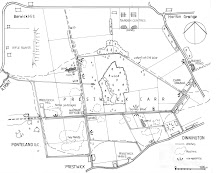Latin Asio flammeus Asio being the genus of Stigidae order denoting tufted ears and flammeus meaning flame like or fiery from the plumage.
Originally described as Hornoul in 1544 Willoughby refined this to Horned Owl but later Short-eared Owl probably coined by Thomas Pennant as the species was separated from the Long-eared Owl.
Many names derive from its characteristics i.e
plumage Brown Yogle, Grey Yogle (Shetland), Red Owl (Dartmoor) and Grey Hullet (Lancashire). Also Cat Owl and Flat faced owl from appearance.
preferred habitat Moss Owl (Yorkshire) Marsh Owl, March Owl, Meadow Owl, Swamp Owl, Bog Owl, Grass Owl and Fern Owl (Ireland)
hunting strategy Day Owl, Evening Owl and Woodcock Owl (Norfolk, Suffolk, Kent, Berkshire)
and prey such as Mouse Owl.
Americans generally refer to it as Hawk Owl and the association is close with the Hen Harriers the birds often seen hunting the same land.
Sea Owl and Pilot Owl (Kent & Suffolk) will refer to birds coming in off the sea on migration. Here's the given name from European countries some of which demonstrate the same derivations
C Kalous pustovka
D Sumpfohreule
E Lechuzn Campestre
F Hibou des marais
FN Suopöllö
G Βαλτόμπυφος
H Rétifülesbagoly
I Gufo di palude
NL Velduil
P Coruja-do-nabal
PL Sowa blotna
R Болотная Сова
S Jorduggla
Just out of interest using the abbreviation SEO can attract lots of hits from the states where the more common meaning is Search Engine Optimization.
Acknowledgements 'All the birds of the Air' Francesca Greenoak. EBBC Atlas of European Breeding Birds and sorry blogger is playing silly buggers with the formatting.
Acknowledgements 'All the birds of the Air' Francesca Greenoak. EBBC Atlas of European Breeding Birds and sorry blogger is playing silly buggers with the formatting.





Single Shortie 5.28pm Monday. N. of bumpy road.
ReplyDelete